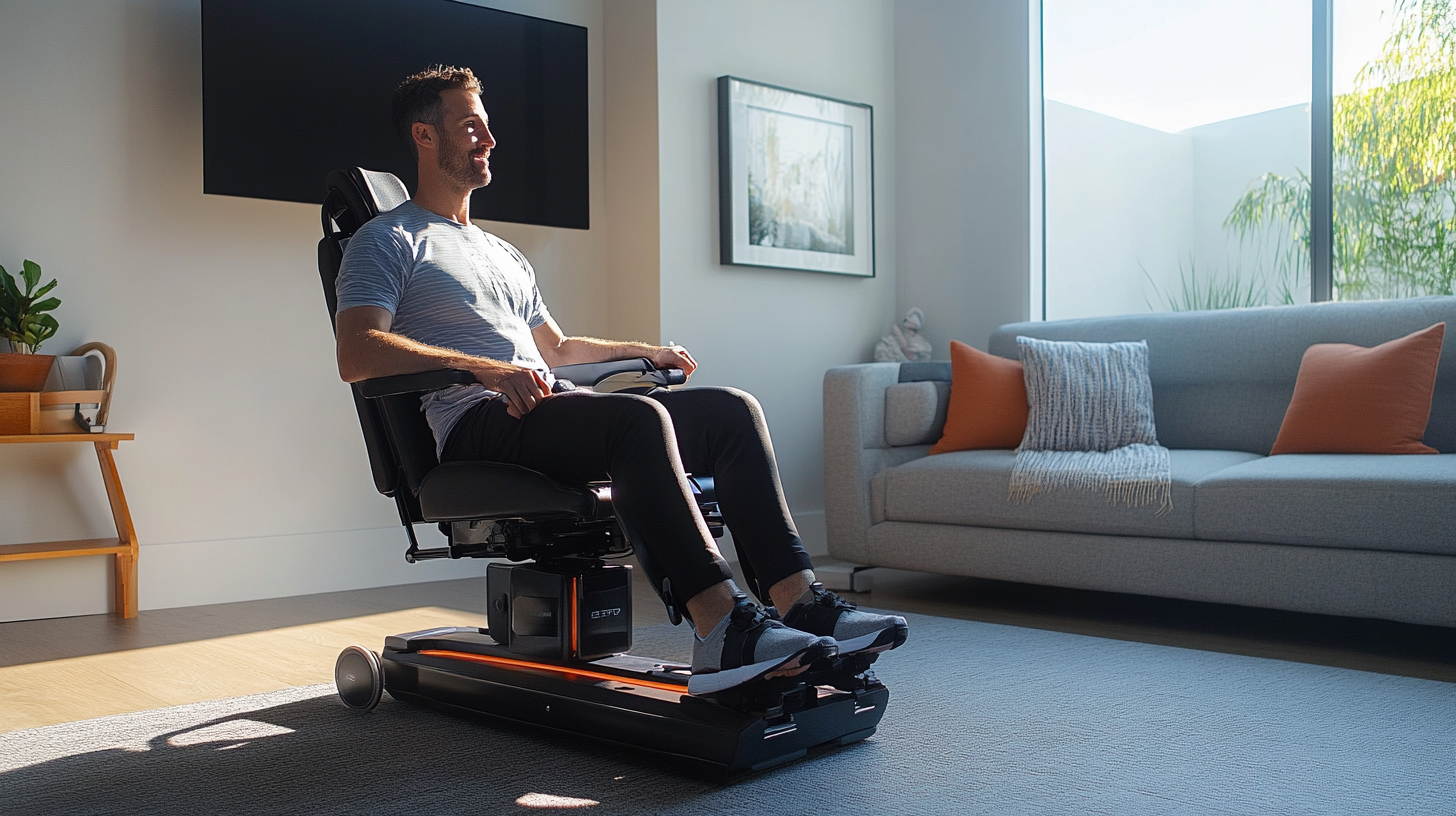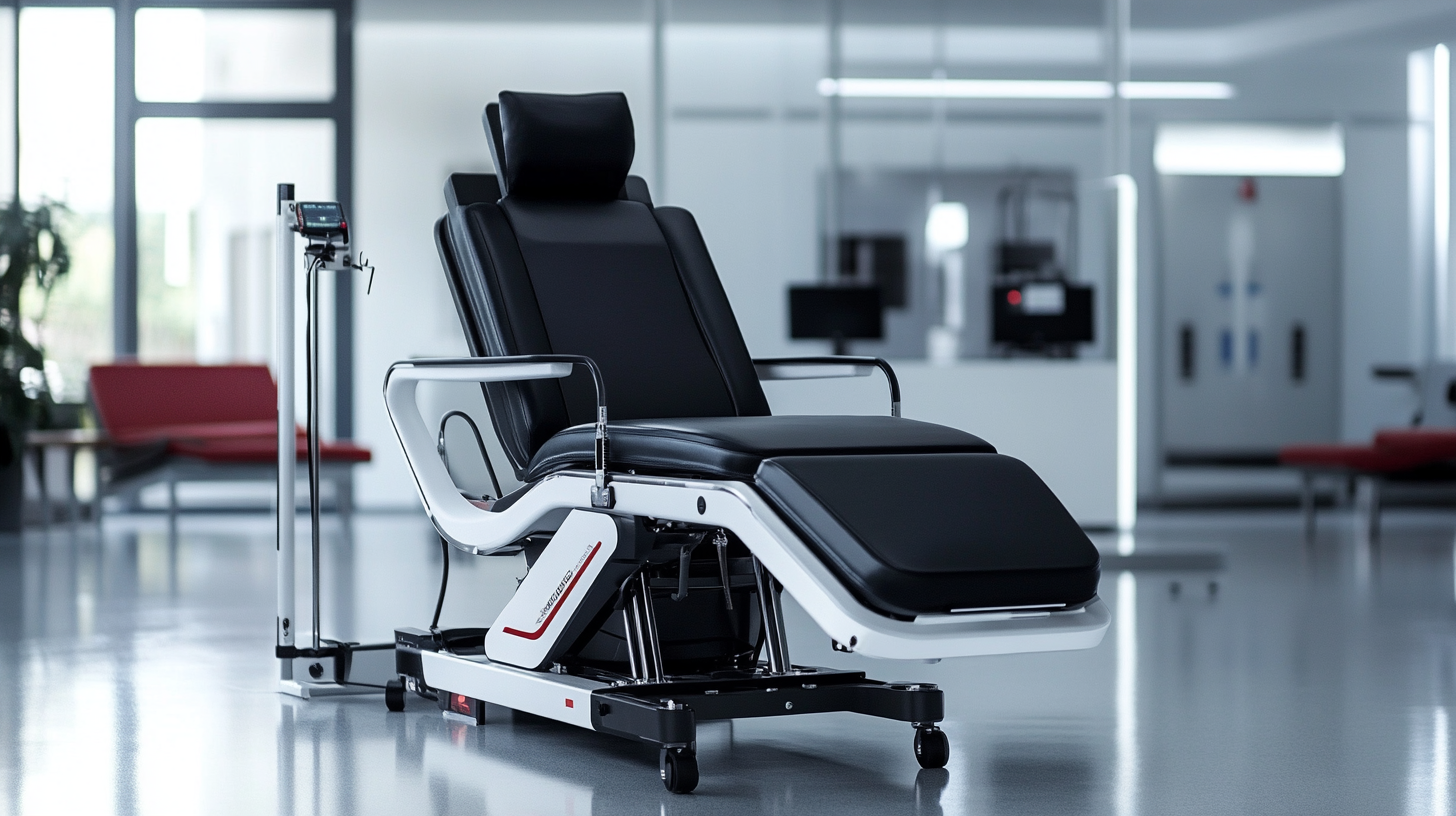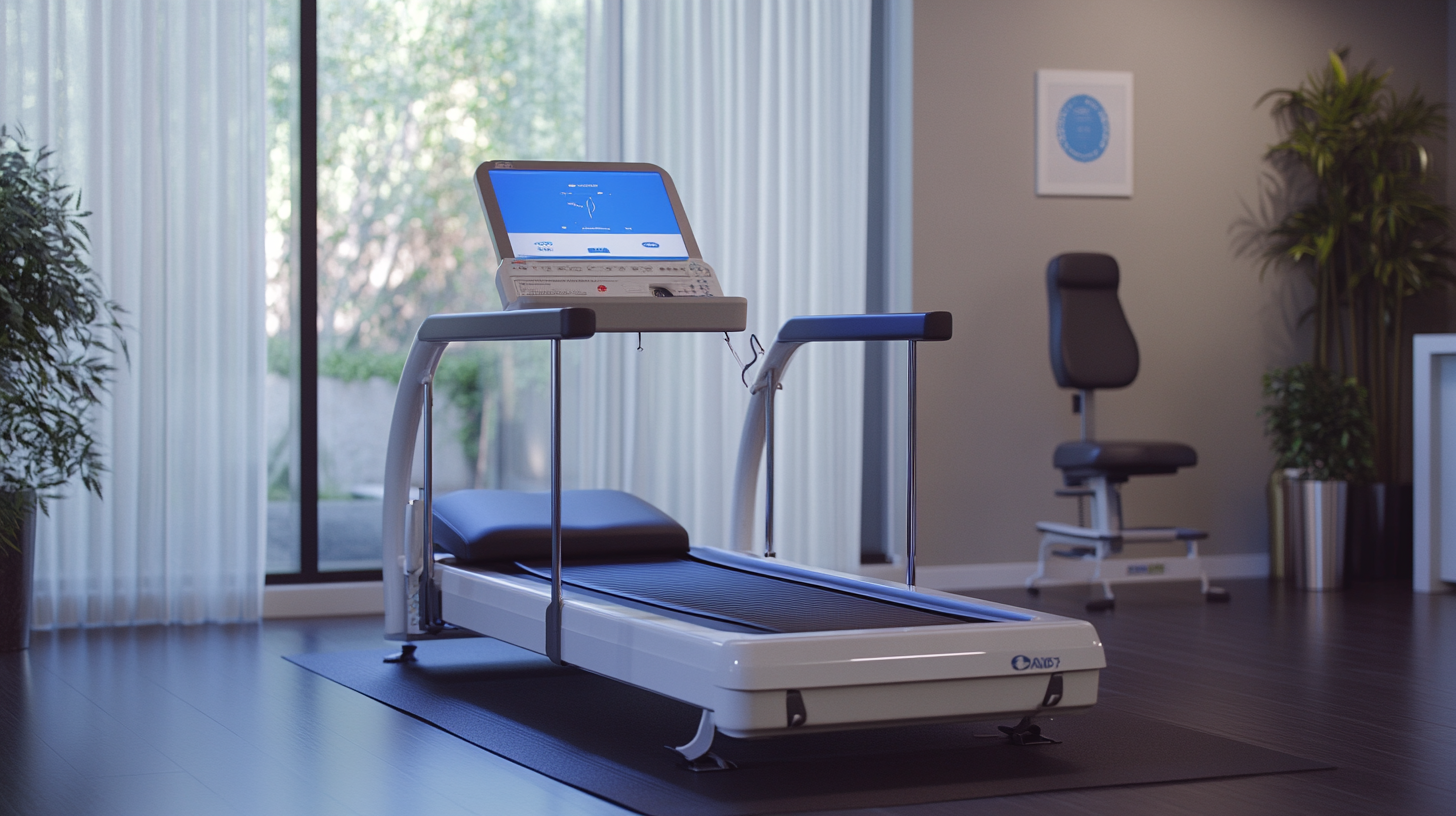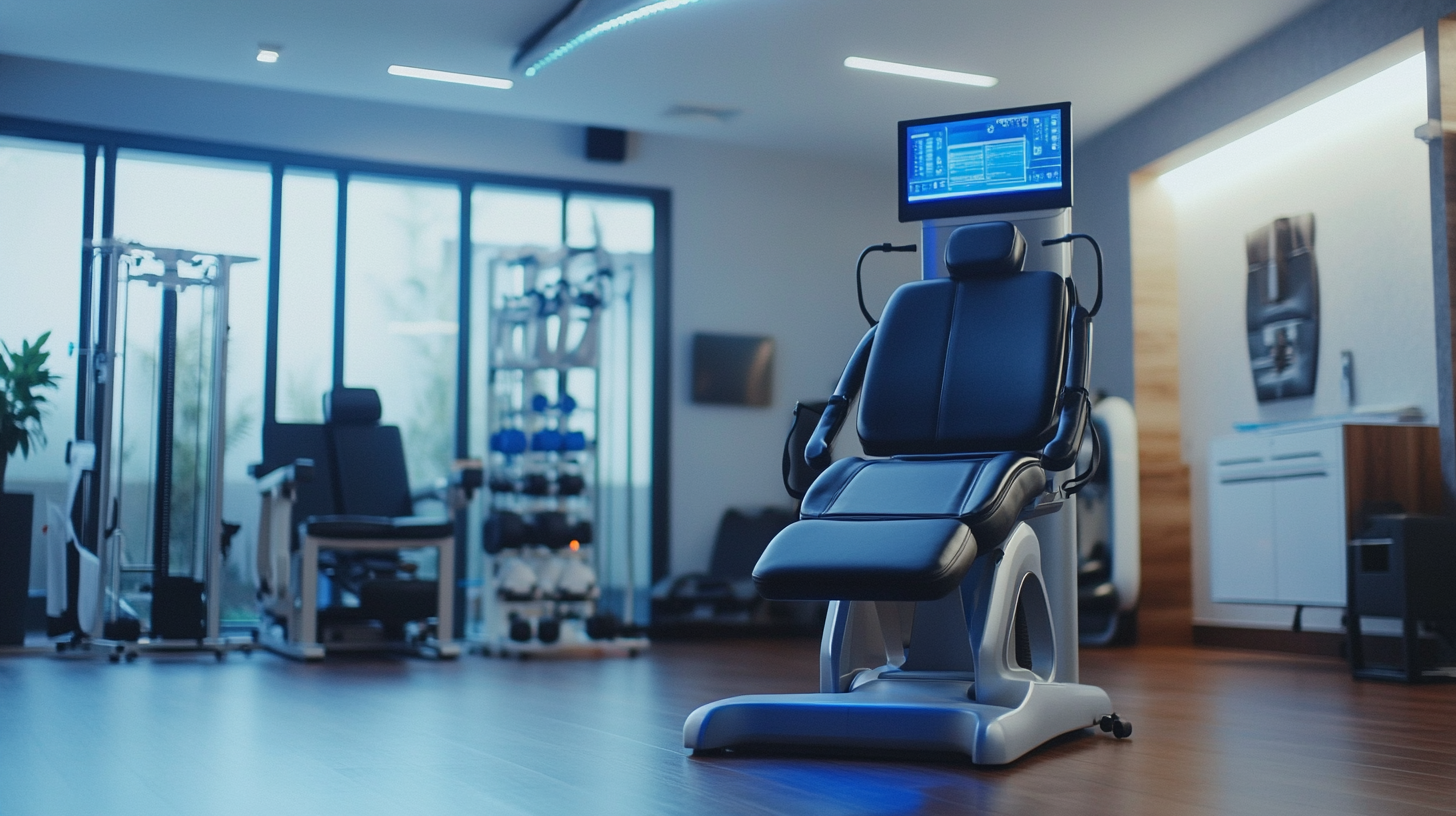Revolutionizing Recovery With Innovative Rehab Equipment for Global Buyers
The global rehabilitation equipment market has experienced significant growth, driven by an increasing aging population and a rising prevalence of chronic diseases. According to a report by Allied Market Research, the rehab equipment sector is projected to reach $21.91 billion by 2027, expanding at a compound annual growth rate (CAGR) of 6.2% from 2020 to 2027. This growth underscores the vital role that innovative rehab equipment plays in enhancing recovery outcomes for patients worldwide. As healthcare systems evolve, there is a pressing need for cutting-edge tools that can support rehabilitation processes and improve the quality of patient care.
Innovation in rehab equipment is not only about introducing new devices but also about enhancing existing technologies to better serve the diverse needs of global buyers. From robotic-assisted rehabilitation devices to smart therapy tools that utilize artificial intelligence, the emphasis on integrating technology into rehab practices is paramount. A recent study published in the Journal of Rehabilitation Research and Development noted that personalized rehab equipment tailored to individual patient needs can significantly speed up the recovery process. Thus, the integration of such innovative solutions is poised to revolutionize the future of rehabilitation, making it more accessible and effective for patients everywhere.

Innovative Rehab Equipment: Transforming the Recovery Landscape for Patients Worldwide
Innovative rehab equipment is transforming the recovery landscape for patients worldwide, particularly in the context of stroke rehabilitation. As stroke remains a significant global health burden, advancements in rehabilitation practices are crucial. Innovative therapeutic technologies, such as robotic exoskeletons and virtual reality therapy systems, are revolutionizing how clinicians approach stroke recovery. These technologies not only enhance patient engagement but also promote faster and more effective rehabilitation outcomes. In addition to stroke rehabilitation, strides in spinal cord injury treatment, particularly through Argentina's groundbreaking stem cell therapy, highlight the global push towards innovative recovery solutions. These pioneering therapies are showcasing how advanced medical interventions can reshape the future of rehabilitation, offering new hope to patients facing serious mobility challenges. The integration of modern rehab equipment facilitates a more personalized approach, allowing practitioners to tailor therapies to individual needs, paving the way for enhanced recovery strategies. As the rehabilitation equipment market continues to grow, leading countries are investing heavily in research and development of these technologies. This investment is leading to a wider availability of advanced rehabilitation tools, empowering patients and healthcare providers alike. From enhancing mobility to promoting functional independence, innovative rehab equipment is setting a new standard in recovery care, ultimately improving quality of life for patients around the globe.

Key Features of Cutting-Edge Rehabilitation Tools That Enhance Healing
In recent years, the rehabilitation sector has witnessed remarkable changes, thanks to the emergence of innovative rehab equipment designed to enhance healing and recovery processes. These advanced tools are not only tailored for improved patient outcomes but also reflect the increasing integration of technology within therapeutic practices, similar to the transformative developments seen in the tech industry, like Lenovo’s AI PC innovations. According to a recent report by MarketsandMarkets, the rehabilitation equipment market is projected to grow from $12 billion in 2022 to over $19 billion by 2027 at a CAGR of 10.5%. This surge underscores the growing demand for cutting-edge rehabilitation tools.
Key features of these innovative rehabilitation tools include enhanced user interactivity and personalized therapy options. For instance, equipment that integrates AI and machine learning can adapt to individual patient needs, optimizing treatment plans in real time. Tools utilizing wearables that monitor patient progress and biomechanical feedback are being implemented to refine muscle recovery techniques, much like Lenovo’s approach to tailoring technology for user experiences. Recent studies have demonstrated a 30% faster recovery rate among patients using these advanced rehabilitation systems versus traditional methods, indicating not only their effectiveness but also a significant shift in rehabilitation paradigms.
Moreover, the deployment of virtual reality (VR) environments in rehab settings allows patients to engage in immersive therapeutic experiences that keep them motivated and focused. This innovative approach has been shown to reduce anxiety and pain perception during rehabilitation exercises, drawing parallels to the importance of user engagement highlighted in Lenovo’s product innovations. As the rehabilitation equipment landscape continues to evolve with these advanced features, it becomes evident that key partnerships between healthcare providers and technology developers will drive forward-thinking solutions in recovery practices worldwide.

Global Market Trends: The Rise of Advanced Rehab Solutions Across Continents
The global market for rehabilitation solutions is undergoing a transformative phase, marked by remarkable advancements in equipment and therapies tailored for diverse needs across different continents. A recent report highlights that the orthopedic braces and support market is poised for significant growth, with projections estimating it will reach USD 9.1 billion by 2030. This surge is driven primarily by the rising incidence of musculoskeletal disorders and an increasing awareness of the benefits of effective rehabilitation products.
In parallel, the global anti-biofilm wound dressing market is also set for considerable expansion, with expectations to hit USD 2,403.1 million by 2035. This growth reflects an urgent response to the rising prevalence of chronic wounds, necessitating innovative approaches to wound care. Advanced materials and technologies are facilitating the development of dressings that not only protect but actively promote healing, thus revolutionizing patient recovery processes.
The integration of such advanced rehabilitation solutions across markets distinctly illustrates the global trend towards prioritizing health and recovery. Countries around the world are investing in innovative rehab equipment, which not only enhances the quality of care but also improves patient outcomes. As stakeholders in the rehab industry recognize the demand for higher efficacy in recovery, the landscape is shifting towards a more robust and technologically advanced future.

Success Stories: How Innovative Equipment Is Changing Lives in Rehabilitation
Innovative rehabilitation equipment is transforming the landscape of recovery for countless individuals worldwide. According to a recent report from the World Health Organization, approximately 1 billion people globally experience some form of disability, necessitating effective rehabilitation strategies. Among these, new technologies and equipment are playing a crucial role in enhancing recovery outcomes. For instance, advanced exoskeletons and robotic physiotherapy devices have shown to improve mobility in patients with spinal cord injuries, significantly enhancing their quality of life.
Success stories abound in the realm of rehabilitation. A study published in the Journal of NeuroEngineering and Rehabilitation highlighted a case where a patient suffering from stroke-induced mobility issues regained the ability to walk after consistent use of an innovative tread-mill system coupled with virtual reality. This technology not only engages patients but also provides them with real-time feedback, necessary for ensuring proper rehabilitation practices.
Moreover, innovative tools like smart wearable devices have revolutionized home rehabilitation. Research indicates that patients utilizing such technologies adhere to their rehabilitation programs 30% more effectively than those relying on traditional methods. This adherence significantly reduces recovery time and improves overall rehabilitation outcomes. Such equipment enables personalized therapy, allowing patients to progress at their own pace, encouraging independence and ensuring long-term success in rehabilitation journeys.
The Future of Rehab Equipment: Predictions and Innovations on the Horizon
The healthcare industry is currently navigating a complex landscape shaped by rapid digital transformation, demographic shifts, and technological advancements. According to the "2022-2023 Healthcare Investment Competitiveness Report" by 21st Century Economic Herald, there is a pressing need for innovative rehabilitation equipment to meet the evolving demands of patients and healthcare providers. As the market continues to expand, stakeholders are compelled to invest in cutting-edge rehabilitation technologies that cater to a diverse range of recovery needs.
The "2025 Technology Trends Report" from CB Insights posits that the next five to ten years will unveil remarkable technological innovations poised to redefine rehabilitation practices. One noteworthy focus is on the development of brain-computer interface technology, which allows for direct communication between the brain and external devices. This could revolutionize recovery for stroke patients, facilitating mobility advances and directly impacting their quality of life.
Moreover, as highlighted by ongoing research in rehabilitation robotics, the demand for lightweight, portable equipment is on the rise. This trend is particularly evident among individuals seeking efficient at-home recovery solutions. The evolving landscape of healthcare technology underscores the critical role of innovative rehabilitation equipment in shaping the future of patient recovery, making it an essential area for investment and development.

